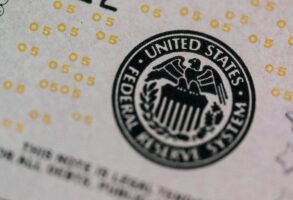
Published January 2, 2019
Much post-midterm election analysis focused on the role education and place of residence played in the outcome. It’s true that educated suburbanites moved toward the Democrats and less-educated whites in rural areas or small towns stuck with the Republicans. But another, less-recognized shift took place among America’s less-observant but religious voters, and it could have important implications for the two parties’ political prospects.
Our ongoing culture wars have long meant that religious extremes are sharply aligned by political party. White evangelical Protestants have been the Republican Party’s mainstay for nearly 15 years, voting for the GOP by a 50- to 70-point margin. Those without religious affiliation have long been the Democratic Party’s bastion, regularly giving it 40- to 50-point margins. These patterns did not change much in the midterms.
Opposite poles regarding religious observance also have long shaped our politics, and those patterns also remained largely unchanged in 2018. The one-third of Americans who attend services at least weekly offered Republican House candidates a 20-percentage-point advantage in 2016 and an 18-point advantage in 2018. The share of those who never attend religious services rose from 22 percent of the electorate in 2016 to 27 percent in 2018, but the Democratic advantage among this group rose only slightly, from 35 points to 38 points.
Had the rest of the electorate behaved like the poles in each measure of religious belief and practice, Republicans would not have lost 40 seats in the House. Their large losses were mainly due to much larger shifts among America’s mushy religious middle.
Catholics, non-Protestant Christians, and religious non-Christians all shifted away from Republicans by significant margins in 2018. Catholics increased their share of the electorate to 26 percent (up from 23 percent) and went from a 7-point Republican advantage in 2016 to a 1-point Democratic lead in 2018. Adherents of non-Christian faiths, about 10 percent of the electorate, moved even more decisively in favor of Democrats, increasing Democratic leads among them by 15 percentage points. “Other Christians”—a group that includes Mormons, Orthodox, and Christians who do not call themselves Protestant or Catholic—moved 9 points in the Democrats’ favor.
Together these groups constituted 60 percent of the total electorate in 2018. That means most of the shift to the Democrats occurred in these less-studied groups.
The shift to the Democrats is even more pronounced when one examines frequency of worship. Voters who attend religious services a few times a month moved from a 9-point Republican advantage to a 6-point Democratic lead. And those who attend only a few times a year—perhaps for Easter and Christmas—moved leftward even more dramatically. In 2016 they voted Republican by a 4-point margin. In 2018, they voted Democratic by a whopping 24-point margin.
This statistic helps us make sense of another finding, the drop in Republican support among white evangelicals. While this is still a strongly Republican group, the GOP’s lead here dropped from 69 percent in 2016 to 53 percent in 2018. Since we know that the Republican lead among regular churchgoers barely budged, the logical conclusion is that Republicans lost a lot of ground among evangelicals who rarely practice their faith.
The conclusion for 2020 is clear. If Trump and Republicans want to win the election, they must improve their level of support among the weakly churched segments of America. How they can do so is less clear, but the president and his party ignore these findings at their peril.




